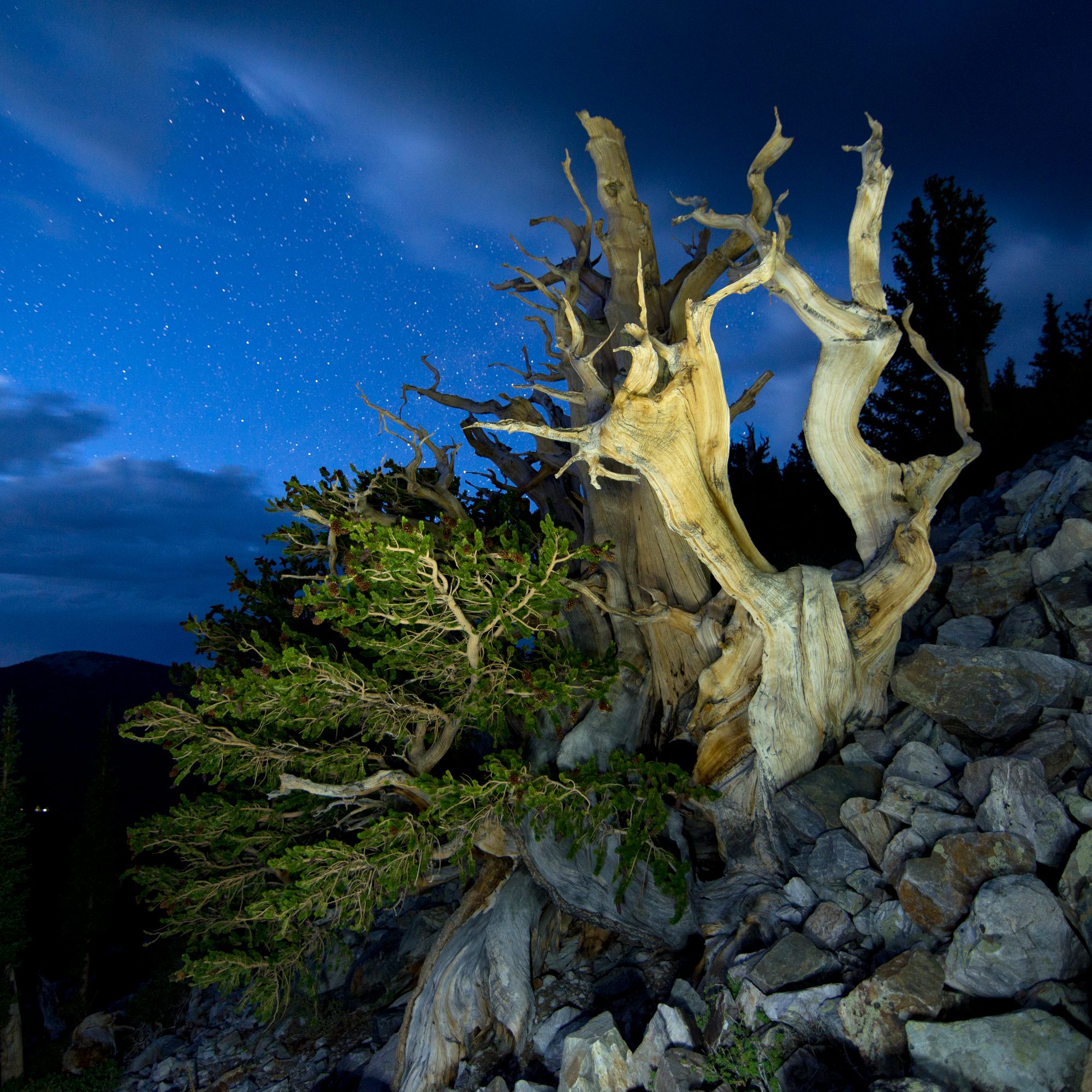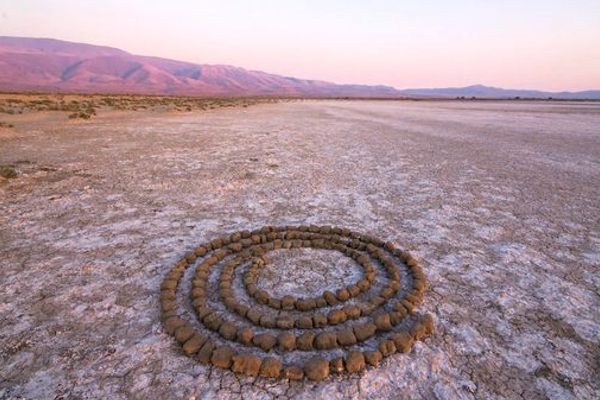An Artist’s Animations Collapse Millennia Into Seconds
On the last day of “The Fellowship of the Loneliest Road,” Paul Johnson fulfills a lifelong dream.
In his time on “The Loneliest Road in America,” the artist Paul Johnson, winner of Atlas Obscura’s and TravelNevada’s The Fellowship of the Loneliest Road, was drawn to locations where pre-history isn’t just a chapter in textbooks: it’s alive in the desert peaks and plains that have resisted industrialization.
“Where I live now [in Minneapolis], everything is farmed or it’s city,” Johnson says. Nevada, by contrast, holds a primordial appeal because its vistas have remained relatively unchanged for thousands of years. “You can imagine people carving away [on petrogylyphs] and almost looking at the exact same scene,” he says.
“I like to imagine how amazing it would be to be able to run the clock of geologic time backwards or forwards,” Johnson says. “Rewind fast enough and you could watch mountains grow, canyons form, deltas fan out. Fast forward and watch Central Nevada being pulled apart by the tectonic forces that are responsible for the Basin and Range landscape.”
More than history or even a human conception of chronology, Johnson’s work entertains geological measures of time. Fittingly, he shoots hundreds of frames over several hours to create his compositions. In the studio, he then compresses their movements into animations that clock in at around 30 seconds. The manipulation of time is at the core of Johnson’s practice. The principle actors in his animations—rocks or branches that have taken hundreds or even thousands of years to form—seem to engage in a playful mockery of human time scales.
On a small scale, Johnson’s work mimics the earth’s gradual movements. “The process is time consuming but taking the time to create something out in the elements forces me to closely examine and appreciate the incredible patterns and systems of the natural world,” he writes in his artist statement.
Ephemerality is a felt presence in each of Johnson’s artworks. One never knows when the wind will pick up or an errant cloud will drift into frame. For this reason, he most often chooses to work with sturdy materials such as rocks, branches, and dirt chunks.
But on the last day of his five-day journey, Johnson chose to work with a material that’s even more inpermanent. At Wheeler Peak glacier in Great Basin National Park, he worked with snow.
Thanks to the effects of climate change, the glacier is endangered. It’s predicted that within 20 years, the formation will be completely thawed. Arranging handfuls of snow into formations that imitate the switchbacks Johnson encountered on his way to the site, the scene he created mimics its environs in more ways than one.
The day’s work done, Johnson spent the rest of his evening fulfilling a lifelong dream: seeing the Great Basin bristlecone pines.
“Ever since reading about these ancient trees years ago, I’ve wanted to see them,” he wrote in the day’s travelogue.

Known for their ability to thrive in harsh environments and reach astronomical ages (at over 5,000 years old, a specimen in California is one of the oldest living organisms on earth), these trees have long held a mythical allure for Johnson, he says. By the moon’s light on the last night of his journey, he carefully wound through mountain trails to photograph the pines.
“It was completely still and there was no sound whatsoever,” he wrote in the day’s travelogue. “I’ve had a number of these quiet moments of reveling in Nevada’s vastness on this trip and they’ve all been incredible, but this one, at nearly 12,000 feet, among these ancient trees who’ve been quietly pushing out needles and a few pine cones up here for millennia, was probably the highlight.”
Johnson headed back onto Highway 50 one last time, en route to Salt Lake City to catch a flight back home.
“I love the alternating landscape of Highway 50,” Johnson writes. “There is a rhythm to it, you climb a pass, crest the top, and see the road stretching out for miles through the next wide open basin before climbing the next pass on the horizon.
Johnson’s art explores the subjectivity of time. The time it takes for a tree to grow may seem interminable to a person, but compared to how long it takes for a mountain to form, it’s the duration of a blink. In his work, Johnson abbreviates hour-long processes into half-minute animations. Conversely, on Highway 50, he lengthened a day’s trip into a week-long adventure.
Johnson flew halfway across the country just to arrive at Highway 50. Once one of America’s most attractive means of arriving at one’s destination, Highway 50 has become an attraction in-and-of-itself.
Traveling at around 70 mph without stopping, the Nevada portion of Highway 50 takes about five hours to complete. But as Johnson’s journey demonstrates, cruising Highway 50 without pausing to absorb its wondrous history, geography, people, and profound ambience would be a shame.
This post is promoted in partnership with Travel Nevada. Head here to get started on your adventure.








Follow us on Twitter to get the latest on the world's hidden wonders.
Like us on Facebook to get the latest on the world's hidden wonders.
Follow us on Twitter Like us on Facebook